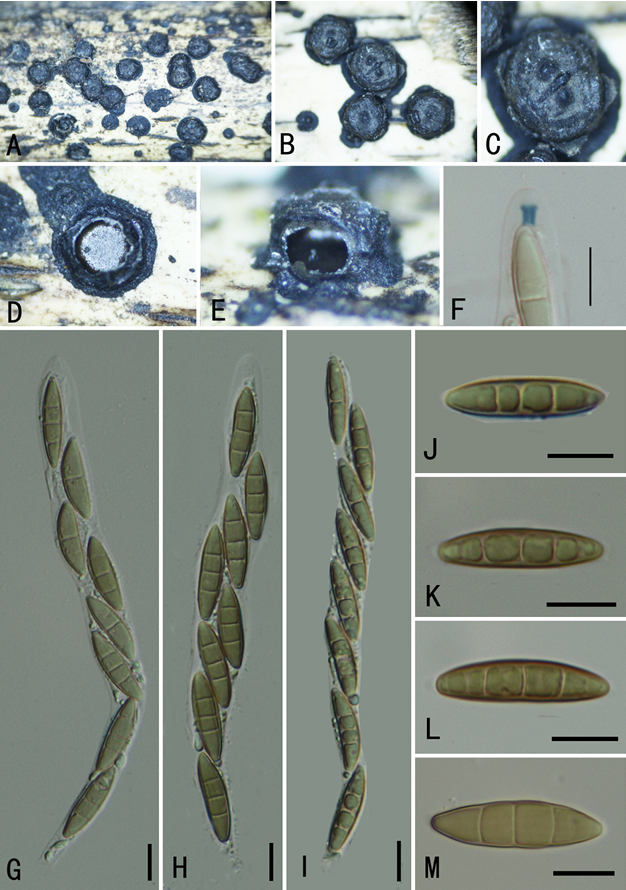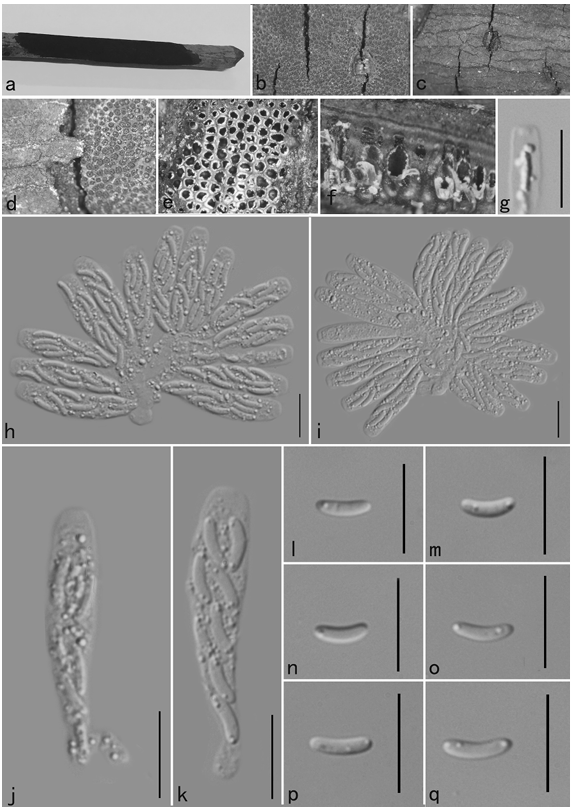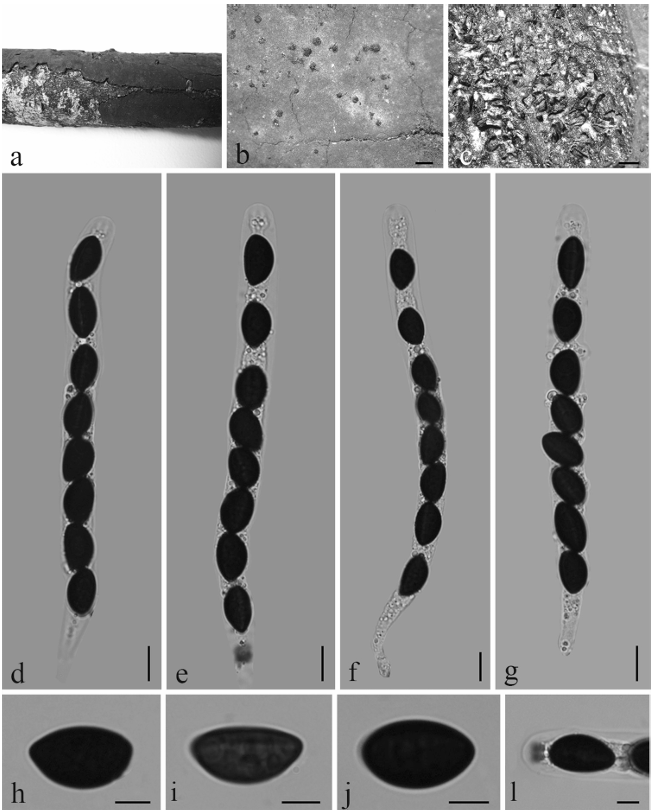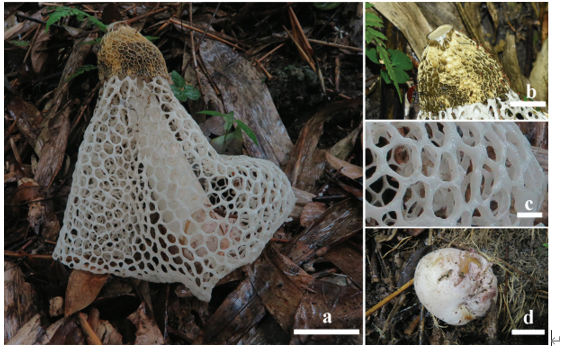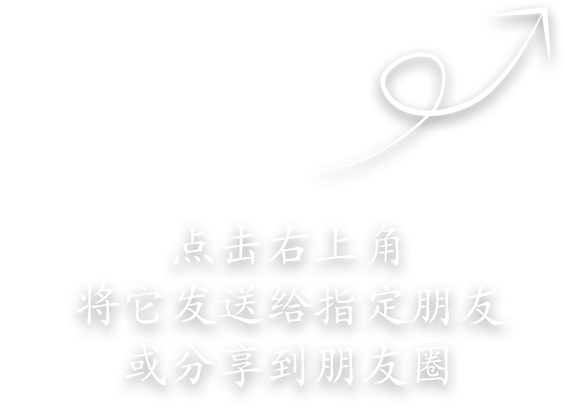Sugiyamaella chuxiongensis C.Y. Chai & F.L. Hui, sp. nov.2021
MycoBank: 835005
Type: China, Yunnan Province, Chuxiong City, Zixi Town, in rotting wood from Zixi Mountain, August 2018, K.F. Liu & Z.W. Xi (holotype NYNU 181038T, culture ex type CBS 16006, CICC 33361).
Morphological Description:
Sexual morph:Undetermined
Asexual morph:The cells are ovoid to elongate (2.5–4 × 3–4.5 μm) and occur sin gly or in pairs after growth in a YM broth for 3 days at 25 °C. Budding is multilateral. After 3 days of growth on YM agar at 25 °C, the colonies are white to cream-coloured, buttery and smooth with entire margins. After 7 days at 25 °C, on a Dalmau plate culture with CM agar, hyphae and blastoconidia are formed. Asci or signs of conjugation were not observed on sporulation media. Fermentation of sugars is absent. Glucose, galactose, l-sorbose, d-glucosamine, d-ribose, d-xylose, l-arabinose, d-arabinose, sucrose, maltose, trehalose, methyl α-d-glucoside, cellobiose, salicin, arbutin, melibiose, raffinose, melezitose, inulin, erythritol, ribitol, xylitol, d glucitol, d-mannitol, d-glucitol, d-mannitol, galactitol, myo-inositol, 2-keto-d-gluco nate, succinate, citrate and ethanol are assimilated. No growth was observed in l-rham nose, lactose, glycerol, d-gluconate, dl-lactate or methanol. In nitrogen-assimilation tests, growth is present on nitrate, nitrite, ethylamine, cadaverine, creatine, creatinine, glucosamine and d-tryptophan, while growth is absent on l-lysine and imidazole. Growth was observed at 35 °C, but not at 37 °C. Growth in the presence of 0.1% cycloheximide, 10% NaCl with 5% glucose and 1% acetic acid is present, but growth in the presence of 16% NaCl with 5% glucose is absent. Starch-like compounds are not produced. Urease activity and diazonium blue B reactions are negative.
Culture:Undetermined
Habitat:Undetermined
Distribution:China
GenBankAccessions: holotype NYNU 181038T (ITS: MK682800; nrLSU D1/D2: MK682795); additional isolates NYNU 18521 (ITS: MT257260; nrLSU D1/ D2: MT257255) and NYNU 18634 (ITS: MT257258; nrLSU D1/D2: MT257262).
Notes: We generated sequences for three isolates of S. chuxiong, NYNU 18521, NYNU 181038 and NYNU 18634. This new species is phylogenetically most closely related to S. valenteae and S. ayubii . Sugiyamaella chuxiong can be distinguished from S. valenteae, based on ITS and nrLSU D1/D2 loci (33/454 in ITS and 15/513 in nrLSU D1/D2) and from S. ayubii, based on ITS and nrLSU D1/D2 (42/499 in ITS and 35/565 in nrLSU D1/D2). Physiologically, S. chuxiong can be differentiated from S. va lenteae by its ability to assimilate d-arabinose, sucrose, salicin, melibiose, raffinose, melezi tose and inulin and its inability to ferment glucose and grow at 37 °C (Sena et al. 2017). Similarly, the ability to assimilate salicin, inulin, erythritol and galactitol and the inability to assimilate l-rhamnose are the primary differences between S. chuxiong and S. ayubii. Additionally, S. ayubii can ferment glucose, while S. chuxiong cannot (Sena et al. 2017).
Reference: [1] Shi, C. F. , Zhang, K. H. , Chai, C. Y. , Yan, Z. L. , & Hui, F. L. . (2021). Diversity of the genus sugiyamaella and description of two new species from rotting wood in china. MycoKeys, 77, 27-39.
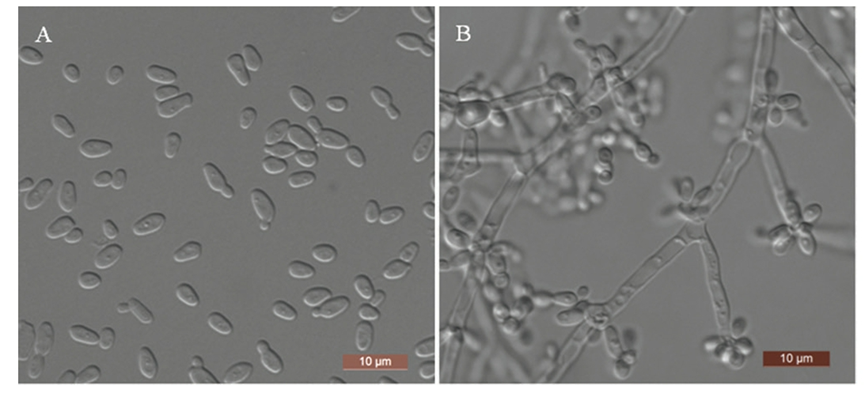
A budding cells after 3 days in YM broth at 25 °C B hyphae and blastoconidia on corn-meal agar after 7 days at 25 °C. Scale bars: 10 μm.


